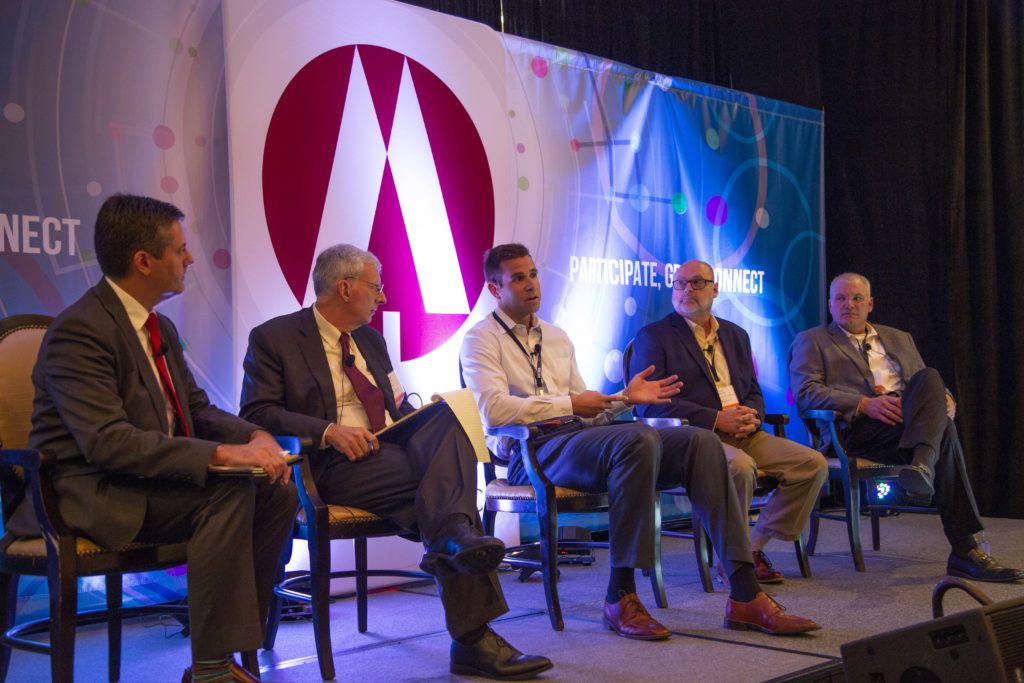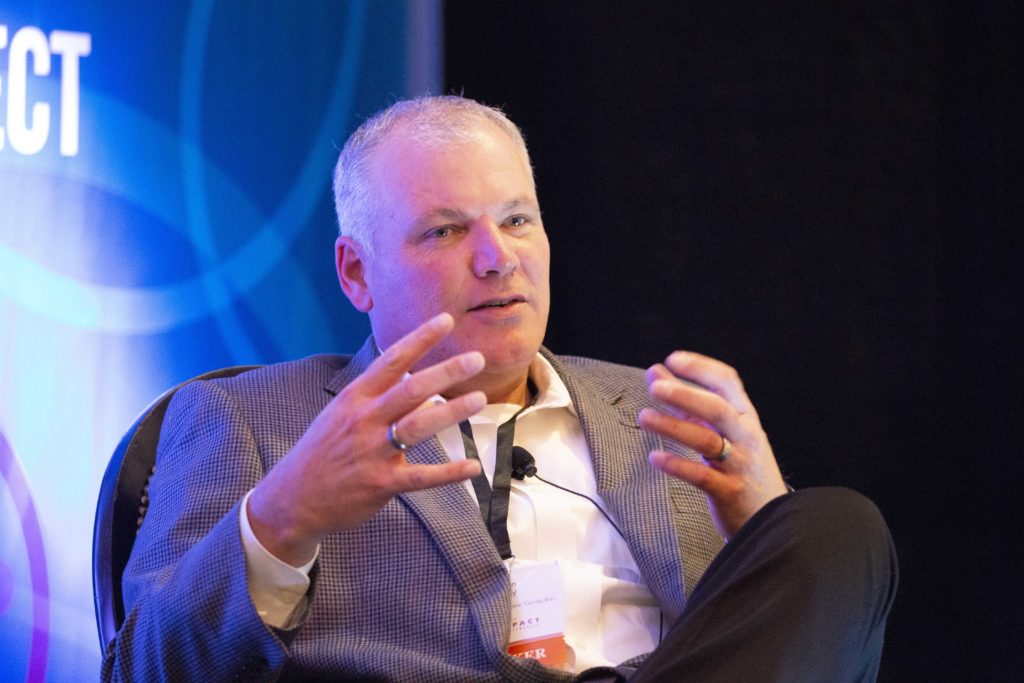
Facing challenges that mirror those seen bringing power to rural America decades ago, electric cooperatives today are entering the broadband market knowing that in some cases, it may be the only way to save their communities.
That was a key message of a panel of co-op leaders at the recent Co-op IMPACT Conference in Arlington, Virginia.
“We are really talking about the ability of communities in parts of the American countryside to survive,” Jeffrey Connor, chief operating officer of NRECA, told the audience. “We have to compete.”
Public policies have failed to ensure adequate internet service in rural communities for commerce, education and medicine among other necessities, leaving more than 23 million Americans unserved or underserved, he said.
“That number will remain static unless we do something about it,” said Connor, who moderated the broadband panel. “We are already community-focused. We just want to be able to participate.”
Today, about 100 electric co-ops have taken on the task of closing the digital divide. Their reasons, Connor said, are not unlike those behind the electric cooperative movement of the 1930s and ’40s: an urgent need in the community for better economic and educational opportunities and the likelihood that no other entity will deliver.
Mike Keyser, CEO of BARC Electric Cooperative in Millboro, Virginia, said that the resources required to launch and manage a fiber-to-the-home (FTTH) build has him convinced that “electric cooperatives are the only ones capable of undertaking projects of this magnitude.”
“Nobody else is going to make the kind of investment, in both time and money that we’ve made in our community,” said Keyser. BARC, which serves members along the Blue Ridge Mountains, began building its fiber network for retail broadband a year ago.
Ralls County Electric Cooperative in New London, Missouri, was a pioneer when it deployed broadband internet to its members in 2004.
“We were losing quality people. They were moving out because of the lack of opportunities,” said Lynn Hodges, RCEC’s CEO and general manager. “We are actually growing now. It’s reverse brain drain.”

In Chariton Valley Electric Cooperative’s thinly populated territory, the lack of broadband access remains painfully evident.
Big employers struggle without reliable high-speed internet in the Albia, Iowa-based co-op’s seven-county territory, which comprises some of the lowest-income areas in the state. Critical internet-based services like telemedicine are out of the question, said Bryon Stilley, CVEC’s general manager and CEO.
“Students can’t even do their homework from home,” he said.
An NRECA study on the value of broadband shows that at the minimum 6.3 million co-op-served households are without broadband as defined by the Federal Communications Commission: 25 megabits per second download; 3 mbps upload.
Electric co-op consumer-members without broadband access will lose at least $68 billion in economic value over a 20-year period, said Russell Tucker, NRECA’s chief economist and lead author of the report.
“We know this number is underestimated. We don’t know by how much,” said Tucker, noting that the lost value is substantially higher than the estimated cost to deploy broadband to co-op homes nationwide.
The panel of co-op leaders underscored the importance of federal loans and grants to help get their multimillion-dollar networks built. “Combination loan/grant programs are absolutely critical to reduce the high capital costs, especially in low-density areas,” said Keyser.
Stilley told the audience about how a recent change in FCC’s funding process whittled an $8 million broadband grant for his co-op down to $56,000 through the Connect America Fund II Auction. The cut was based on inaccurate self-reported information, or “477 data,” collected by the FCC about available internet service as advertised by for-profit providers, he said.
He said CVEC will continue to search for funding for the project, which could cost around $36 million. The co-op serves 6,100 members and has a density of 2.8 members per mile in the rural areas it serves. When the city of Albia is taken into account, the density grows to 4.8 members per mile.
“We do what we can for members,” said Stilley. “We want to provide the same reliability of broadband that we do with electricity.”
Cathy Cash is a staff writer at NRECA.
Read more:
5 Takeaways From NRECA’s Study on the Value of Broadband for Consumer-Members
Electric Co-ops Get a Big Boost for Rural Broadband Efforts in FCC Auction
NRECA Coverage and Resources on Rural Broadband